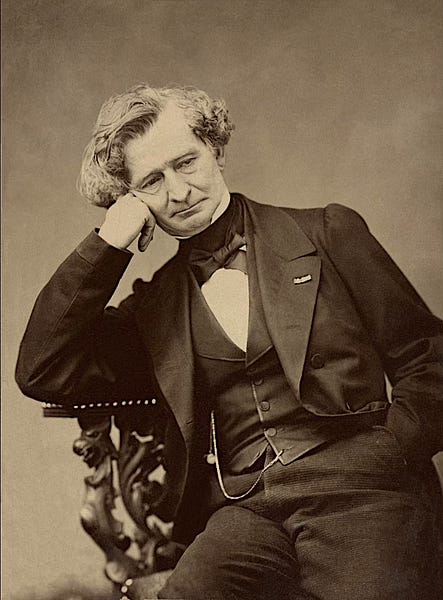This Day in Legal History: Jack Ruby Convicted
On March 14, 1964, Jack Ruby was convicted of murdering Lee Harvey Oswald, the accused assassin of President John F. Kennedy. Ruby, a Dallas nightclub owner, had shot Oswald on live television two days after Kennedy’s assassination, as police were transferring Oswald from the city jail. The highly publicized trial concluded with a guilty verdict, and Ruby was sentenced to death. However, in 1966, the Texas Court of Criminal Appeals overturned the conviction, ruling that improper testimony had been admitted and that the trial should not have taken place in Dallas, where impartiality was questionable. A retrial was ordered, but before it could proceed, Ruby died of lung cancer on January 3, 1967. His actions and their legal consequences remain a topic of debate, with some believing he was motivated by grief and others suspecting a broader conspiracy.
Ruby testified before the Warren Commission in July 1964, providing a rambling account of his mental state and possible connections to figures of interest. Arlen Specter, a future U.S. Senator from Pennsylvania, was among those questioning him. The case highlighted due process concerns, particularly regarding venue changes in high-profile trials, and underscored the legal system’s challenges in handling emotionally charged cases with national significance.
Two federal judges, one in Maryland and another in California, have ordered the Trump administration to reinstate thousands of probationary federal workers who were fired as part of a sweeping effort to shrink the government. The rulings represent the most significant legal challenge yet to Trump and adviser Elon Musk’s aggressive push to cut federal jobs. The Maryland case, led by 20 Democratic-led states, targeted 18 agencies accused of unlawfully dismissing workers without following required procedures. Judge James Bredar ruled that the firings amounted to mass layoffs requiring prior notice to state governments.
In California, Judge William Alsup reached a similar conclusion, ordering reinstatement for workers at six agencies, including the Department of Defense. He criticized the U.S. Office of Personnel Management (OPM) for directing agencies to fire workers en masse without legal authority. The Trump administration argues that probationary employees have few job protections and can be terminated for nearly any reason. However, Democratic-led states claim the firings violated regulations requiring agencies to provide 60 days’ notice before mass layoffs.
At least 24,000 probationary workers have been fired since Trump returned to office, affecting agencies such as the EPA, Department of Education, and Homeland Security. The Merit Systems Protection Board has also intervened, recently ordering the Agriculture Department to temporarily reinstate nearly 6,000 workers. Meanwhile, unions and advocacy groups continue legal efforts to block further terminations, with the American Federation of Government Employees calling the rulings a victory against an administration aiming to cripple federal agencies. The Trump administration has vowed to fight back against the court orders, arguing they undermine presidential authority.
Fired Workers at 18 Agencies Reinstated in Court Blow to Trump
US judges order Trump administration to reinstate thousands of fired workers
Columbia University has issued severe punishments to students involved in a pro-Palestinian protest that occupied a campus building last spring, including expulsions and temporary degree revocations. The announcement follows the Trump administration’s decision to cancel $400 million in federal funding to the university, citing an inadequate response to antisemitism. Interim President Katrina Armstrong acknowledged the government’s concerns and pledged cooperation. However, the university has not disclosed the number of students disciplined, nor their identities, citing privacy laws.
Critics argue the crackdown is politically motivated, particularly since the expelled student union president, Grant Miner, was removed just before contract negotiations with the university. The Trump administration has escalated its efforts against what it labels "pro-Hamas" protests, detaining Columbia student Mahmoud Khalil, a protest leader, for deportation—though a federal judge has temporarily blocked the move. These actions raise serious concerns about the suppression of campus activism and whether the university’s response was driven by financial and political pressure rather than an impartial disciplinary process.
Columbia’s handling of the protests appears to be shaped more by government pressure than by a genuine commitment to campus safety or free speech. The timing of expulsions, particularly targeting a union leader, suggests a broader effort to stifle dissent rather than uphold academic integrity. The federal crackdown on protesters further complicates the situation, blurring the line between addressing antisemitism and suppressing legitimate political expression.
Columbia University punishes pro-Palestinian protesters who occupied building | Reuters
Newsmax has paid $40 million to settle a defamation lawsuit filed by Smartmatic over false claims that the company helped rig the 2020 U.S. election for Joe Biden. The settlement was reached privately last year, but the amount was disclosed in a recent investor filing. Smartmatic sued Newsmax in 2021, alleging the network knowingly spread misinformation, falsely stating that its machines were hacked and that it was backed by corrupt regimes. Newsmax defended its reporting as protected by the First Amendment but later clarified its coverage and invited Smartmatic to respond on air, an offer Smartmatic declined.
Smartmatic had initially sought between $400 million and $600 million in damages. Meanwhile, the company continues its $2.7 billion defamation lawsuit against Fox News, following a historic $787.5 million settlement Fox paid to Dominion Voting Systems. The Newsmax case underscores the financial and legal consequences media outlets face for amplifying election misinformation, particularly when it leads to measurable reputational and financial harm.
Newsmax paid $40 million to settle defamation suit over US 2020 election claims | Reuters
This week’s closing theme is by Hector Berlioz
On this day in 1869, French composer Hector Berlioz passed away, leaving behind a legacy of bold orchestration, vivid storytelling, and groundbreaking compositions that pushed Romantic music to new heights. Born in 1803, Berlioz defied his family’s wishes for him to become a doctor, instead immersing himself in the world of music, where his dramatic flair and innovative techniques set him apart. He was a master of programmatic music, crafting works that told intense, almost cinematic stories through sound.
His most famous composition, Symphonie Fantastique, is a perfect example of this. Written in 1830, the symphony follows a tormented artist haunted by unrequited love, spiraling into madness and hallucination. The final movement, “Dreams of a Witches’ Sabbath,” is a feverish nightmare of swirling strings, eerie bells, and grotesque dance rhythms, as the protagonist imagines his own funeral turned into a macabre celebration. The piece is filled with dark energy, blending horror and exhilaration in a way that was revolutionary for its time.
Berlioz’s influence stretched far beyond his own era, inspiring composers like Wagner, Mahler, and even film composers of the 20th century. Though he struggled for recognition during his lifetime, often facing resistance from conservative critics, his music eventually gained the admiration it deserved. His orchestral mastery and fearless storytelling continue to captivate listeners today.
To close this week, we leave you with the chilling and electrifying "Dream of a Witches’ Sabbath" from Symphonie Fantastique, a piece that perfectly embodies Berlioz’s genius for the dramatic and the surreal.
Without further ado, Hector Berlioz’s “Dreams of a Witches Sabbath” from his Symphonie Fantastique. Enjoy!














